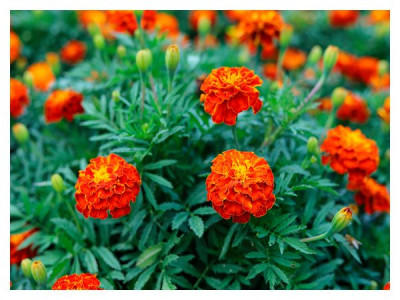If at the appointed time the dahlias did not please you with lush flowering, this is not a reason to despair. It is better to try to find out why this happened so as not to make mistakes in the future. It can be not only a violation of agricultural technology or lack of light.
If by the middle - the end of August the dahlias in your garden have not bloomed - this is a reason to seriously think about it. In order for these beautiful flowers to please you with abundant flowering, you must strictly observe all agricultural practices and provide delicate plants with suitable conditions for growth. What mistakes should be avoided in order to enjoy the flowering of dahlias until the first frost?
1. Lack of light

Dahlias really need enough light (at least 8-10 hours a day). If the flower garden is in the shade, annual dahlias will most likely not bloom, grow small and pale, or, at best, bloom one flower.
An interesting feature of plants is that in the wild they grow in conditions of short daylight hours and cool nights, so the peak of flowering of dahlias occurs in August-September. However, this may vary depending on the variety. In any case, next season, choose a brightly lit place to organize a flower bed.
2. Lack of water

If you forget to water your dahlias, then be prepared for the fact that the plants will not be able to form buds and bloom. In dry and hot weather, dahlias should be watered daily (at least 5 liters of water), especially in the first week after planting. The soil near the bush should be sprinkled with peat, humus or mulch so that the earth retains moisture and does not crust. The soil should be saturated with moisture at least 30-40 cm deep.
3. Dry weather

This reason is less relevant for varieties of dahlias from the tropics and from the equator, but, nevertheless, in the middle lane it often causes premature drying of dahlias. An increase in temperature to 30-35 ° C slows down the growth of dahlias, and on such days it is necessary to water the plants either late in the evening or early in the morning when there is no sun. It is also recommended to mulch the soil with a layer of freshly cut grass 15 cm thick to protect it from overheating. So that the roots do not rot in the heat, sprinkling can be carried out.
4. Excess nitrogen in the soil

Oversaturation of plants with nitrogen leads to abundant leaf growth, but budding slows down. If dahlias even bloom, they do it very reluctantly, as if they are "doing a favor." To feed dahlias, an infusion of organic matter is used: bird droppings (diluted with water in a ratio of 1:20) or cow dung (1:10). The first top dressing is carried out 10-14 days after disembarkation, and each subsequent one no more than 1 time in 15-20 days. 2-3 times you can add 15 g of ammonium nitrate under each bush. All feeding should be stopped in the second half of July.
5. Dahlias didn't pinch

One of the reasons for the late or weak flowering of dahlias is pinching that is not carried out on time. Stopping the growth of dahlias should be done after the formation of 4-5 pairs of true leaves. Otherwise, all the remaining forces of the dahlia are directed to the formation of one bud - the strongest and often the only one. If you hold a pinch, then the bush will give an abundance of flowers and will look lush and bright.
Only low-growing and compact border dahlias do not need pinching!
6. Shoots too stretched during the growth period

The rapid growth of shoots during germination can subsequently affect their flowering. Before sprouting, delenki are usually disinfected in a dark pink solution of potassium permanganate. A month before planting, they are laid out in boxes and half filled with nutrient soil. To avoid stretching, plants are placed in a well-lit area and maintained at a temperature of 16-22°C. Closer to the time of planting in open ground, the flowers are taken out into a greenhouse or under a film and, with the help of airing, are “accustomed” to fresh air, and then planted in a permanent place.
7. Wrong division of dahlia tubers

The easiest way to propagate and rejuvenate dahlias is to divide the tubers. Inexperienced flower growers often plant the whole plant without dividing its tubers into small parts. They mistakenly believe that if the base is large, then the bush will turn out to be lush and flowering. In reality, there will indeed be a lot of leaves and branches, but there will be very few flowers. It is advised to divide the tubers in the fall, until they are hardened. Pay attention to the fact that a small kidney is located above each tuber, otherwise the sprouts can not wait.










